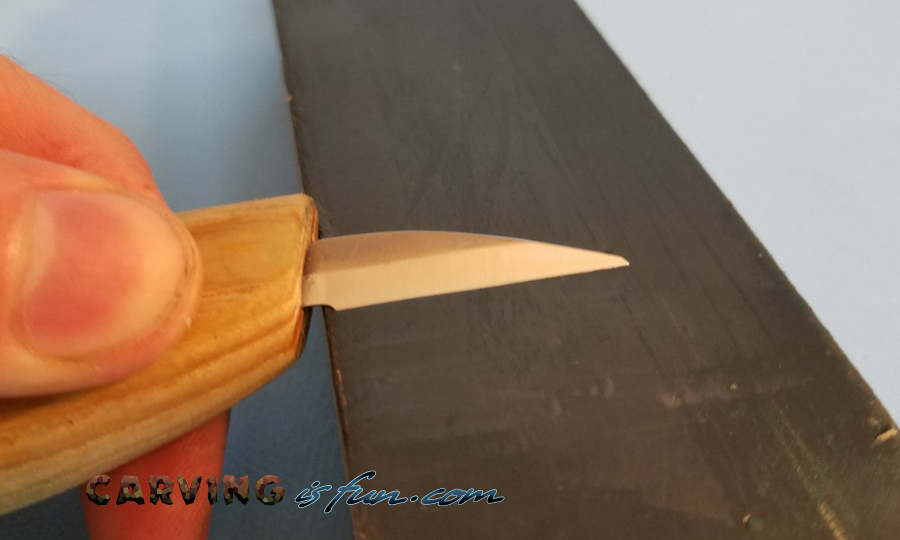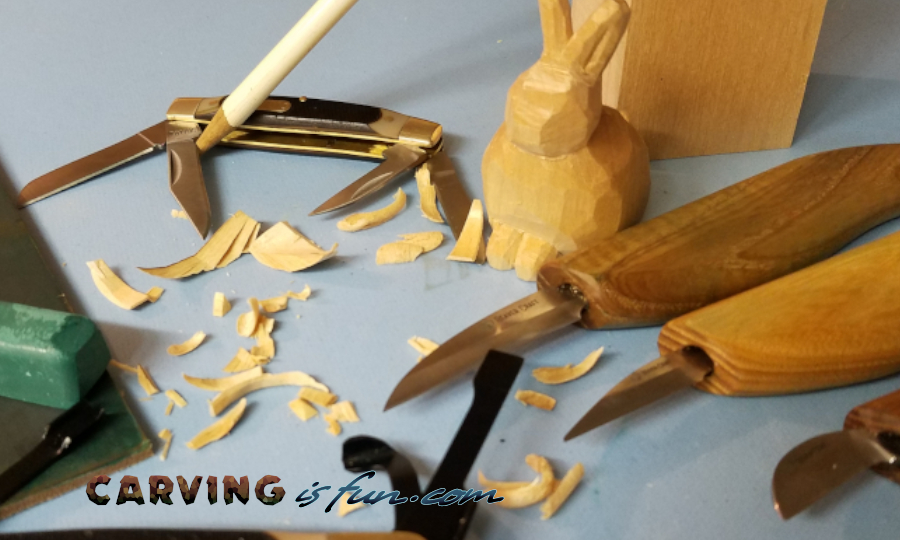Of all the wood carving disciplines, whittling is the simplest and easiest to get into. It requires the fewest and most simplest tools and can be done just about anywhere, making it great for those who are camping or just want to craft something by hand in their back yard.
So what is whittling?
Whittling is the process of carving and shaping wood with only a knife. This is an enjoyable pastime where someone can create a piece of artwork or just enjoy the non-artistic act of randomly shaving off wood from a stick.
Many people all over the world enjoy whittling and is one of the oldest forms of artwork spanning back over a few millennia. Now, with todays tools, it is a very easy to get into this very enjoyable hobby and make beautiful works of art.
This makes whittling a great hobby for most people as it allows people to be creative, make gifts for other people, and enjoy themselves by bringing something unique into the world with their own hands.
Is Whittling Hard?
Lots of people often feel intimidated when looking at others whittling projects. It can feel like a really difficult task when looking at someone elses finished carving and then looking back at the fresh block of wood in your hands.
Whittling itself isn’t hard to do and is actually quite easy when you have the right tools and materials. With an easy piece of wood to carve, like basswood, and a sharp knife, whittling is quite easy to do.
Learning to whittle won’t take too long if you take the time to practice. If you want to learn more about how long it can take to learn, check out my link below:
https://carvingisfun.com/how-long-to-learn-wood-carving
Is Whittling Dangerous?
Since whittling involves the use of a sharp knife near your fingers, there is some concern about how safe whittling is as a hobby.
Whittling can be considered to be more dangerous than other types of wood carving as you may have to make difficult cuts in close proximity to your fingers, increasing the chance of injury. However, these chances of injury can be greatly reduced by using carving gloves and proper knife handling techniques.
Using a quality wood carving glove with reinforced fiber is a great way to prevent injury. If you want to see some good options, check out my carving glove review by clicking the link below:
https://carvingisfun.com/whittling-gloves
Whittling vs Wood Carving
You sometimes see the words “whittling” and “wood carving” used interchangeably. While they both relate to cutting and shaping wood with tools, they are not exactly the same thing.
So what is the difference between whittling and wood carving?
Whittling is the act of cutting and shaping a piece of wood with nothing more than a knife while wood carving utilizes a wider range of tools like chisels, gouges, rasps, power tools, and mallets to shape and carve wood.
Most people’s journey into wood carving will involve whittling as it is the simplest and easiest path as the tools are more readily available. You don’t need any specialized tools to start whittling and you probably already have everything you need to start right now.
What do You Need to Start Whittling?
Whittling itself is very simple to do and requires the fewest tools to start wood carving. There is no need to spend a lot of money and you may already have everything you need to start right now!
Here is a list of everything you need to start whittling right now:
- A sharp knife
- Wood to whittle
- A glove to protect your hand
- A leather strop with polishing compound
You don’t really need an expensive knife to start whittling, any properly sharpened knife that you can easily manipulate in your hand will be up to the task. There are some that are made specifically for whittling, if you want to see some, click here for a list of the best whittling knives on the market.
Most people start whittling with sticks they find on the ground or with spare pieces of wood they have laying around. While this is a great and inexpensive way to start, some of the best wood to start practicing with is called Basswood (or linden wood) as it is soft enough to easily carve while being hard enough to allow for small details.
Using a protective glove on the hand that is holding the wood is ideal for anyone who is new as it allows you to learn proper knife handling techniques without the risk of cutting your fingers.
Even using something like a basic shop glove is better than nothing, but there are special slice resistant gloves that provide more dexterity and protection. If you want to see some good options, click here for a list of different types gloves to choose from.
Finally, the key to an easy and more enjoyable whittling experience is using a properly honed knife that easily slices through the wood. For this you will want to use a leather strop with polishing compound to hone your knife to a razor edge.
What Kind of Knife is best For Whittling?
There are many different types of knives all over the world, including some that are specially designed just for whittling.
These whittling knives will typically handle much butter than a standard pocket knife or shop knife, especially when applying small details. Some people, like myself, have several varieties of knives available to them when they whittle so they can pick the right knife for the task at hand.
Can You Whittle with Any Knife?
A common question I hear from beginners is if they can whittle with the simple pocket knife that they carry with them every day. They usually don’t want to go out of their way to purchase a dedicated whittling knife just to start a simple hobby.
So, can you whittle with any knife?
Yes, you can whittle with most any knife as long as it is sharp and easy to handle when carving wood. For best results, use a knife that is sharp, isn’t serrated, or overly long.
However, you can pick up whittling knives that are specially designed for the act of whittling, which will provide you with a knife that is sharp and easy to handle.
What does a Whittling Knife Look like?

A typical whittling knife is very simple in design. It typically only consists of a simple wooden handle and a short and narrow blade that is honed razor sharp.
There are also some folding whittling knives that use the same style of blades but in a more convenient folding design so you can simply place it in your pocket and whittle wherever you wish.
How do You Sharpen a Whittling Knife?
Learning how to properly maintain the razor edge on your whittling knife is the key to success for a smooth and consistent cut. If you don’t properly hone your blade before and during whittling, your edge sharpness will diminish and you won’t be able to make smooth cuts into the wood.
There are several methods of sharpening your whittling knife, but if you are using a quality made whittling knife, all you will need to do is maintain the edge with a leather strop with polishing compound.

In order to hone your whittling knife on a leather strop, you will want to lay the cutting edge flat on the strop and pull the knife along the strop with the cutting edge pointing in the opposite direction that you are moving the knife. This way you don’t cut into the leather and ruin the strop.
To learn more about sharpening your knives, check out my whittling and wood carving knife sharpening guide, linked below:
https://carvingisfun.com/sharpening-a-knfie/
What is the Best Wood For Whittling?
For those of you just getting into whittling, you may wonder what kind of wood would be best for you. Sometimes due to regional restrictions, you may only have a few different types of wood available.
Typically, you want to whittle with softer woods like basswood and pine as they aren’t as hard as other woods, like oak, and dull out your knife faster. On the other hand, you don’t want to use wood that is too soft, like balsa wood, as it won’t allow the carver to make finer details in the wood.
If you are just starting or are wanting to save some money, you can use the wood off the ground or fresh cut wood from the tree called green wood. Most wood on the ground will typically be dryer and harden up a little, but green wood will have some of the natural moisture still in the wood making it softer and easier to carve.
More Whittling Resources
If you want more whittling resources like where to buy wood or some helpful step by step guides, check out my one stop whittling resource page to get started!

